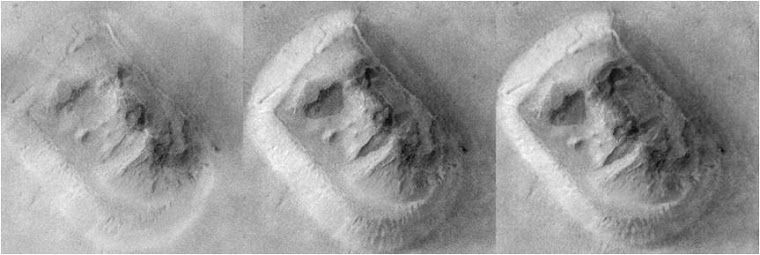Joseph Schuman Senior Correspondent
AOL News
(March 28) -- Was it long-term climate change, rather than a rogue asteroid, that killed off the dinosaurs?
That's the conclusion of German paleontologist Michael Prauss, who studied 65-million-year-old fossils drilled out of the earth in the Brazos River area of Texas and argues that radical changes to the flora and fauna of the era began long before arrival of the massive space rock widely associated with one of the largest mass extinctions in the history of the planet.
That impact, at what is now Chicxulub, Mexico, in the past 30 years has become the primary suspect in the death of the dinosaurs. And it was the subject of an article in the journal Science earlier this month in which 41 scientists from around the world argued that a wealth of global data show the extinctions began at the same time that the asteroid's crash sent debris across the atmosphere and blocked out the sun for years.
Illustration of herd of Hadrosaurus running away from fire.
DEA Picture Library/Getty Images
A German scientist refutes the widely accepted theory that an asteroid led to dinosaurs' extinction, saying long-term climate change was to blame instead. Above, an illustration shows a herd of Hadrosaurus running away from fire.
But Prauss, writing in next month's edition of the journal Palaeogeography, Palaeoclimatology, Palaeoecology and working with Princeton paleontologist Gerta Gerta Keller -- a well-known critic of the Chicxulub theory -- maintained the impact was just one in a chain of catastrophic events that caused substantial environmental upheaval.
"The resulting chronic stress, to which of course the meteorite impact was a contributing factor, is likely to have been fundamental to the crisis in the biosphere and finally the mass extinction," Prauss said.
Those events include the massive, years-long volcanic activity in what is now the Deccan Plateau of India, and which, like the Chicxulub asteroid impact, is conventionally used by paleontologists to separate the Cretaceous period from the Paleogene period.
The Cretaceous, with a relatively warm climate a high sea levels, was the last era of the dinosaurs and the large marine reptiles that lived at the same time. And Prauss also takes issue with other paleontologists' use of Chicxulub as the historical demarcation point.
"The actual impact took place well before the geochemically and micropaleontologically defined Cretaceous Paleogene boundary," he said.
In support of his theories, Prauss cites his analysis of samples taken from drill cores and rock sections dating to the Cretaceous-Paleogene boundary near Brazos, which is about 620 miles from the Chicxulub crater.
The appearance and distribution of microfossils -- the remains of algae, pollen and plant spores -- demonstrate that significant and persistent variations of the ecosystem built steadily over the late Cretaceous and continued over several million years, Prauss said. They can especially be seen in the fluctuation of sea levels and productivity of marine algae, and the so-called fern spike -- a widespread surge in fern spores that signaled landscapes were repopulating after an ecosystem was destroyed.
Prauss said the fern spike began well before the Paleogene period began, and that the Cretaceous-Paleogene boundary -- and the asteroid impact -- marked only the peak of a trend that began millions of years earlier.
"In the light of the new data, both of these points have to be refuted," Prauss said.
Earlier this month, when the Chicxulub paper appeared in Science, one of its authors told AOL News that a goal of the team's work was to respond to arguments coming from the minority of paleontologists who cast doubt on the asteroid's role in killing the dinosaurs.
"It is almost impossible to change the skeptics' minds," Tamara Goldin said. "But we hope we can communicate to the scientific community and the public that this impact-induced environmental catastrophe did happen."
Still, it's important to note that both papers are using geological data to tie environmental events to the period that produced the latest dinosaur fossils scientists have found. In other words, paleontologists are dating the scene of the crime and placing environmental suspects at the scene with some pretty strong arguments.
But there's no direct evidence showing what killed the dinosaurs, leaving open a debate that's likely to continue.
2010 AOL Inc. All Rights Reserved.
Sunday, March 28, 2010
Subscribe to:
Post Comments (Atom)

No comments:
Post a Comment